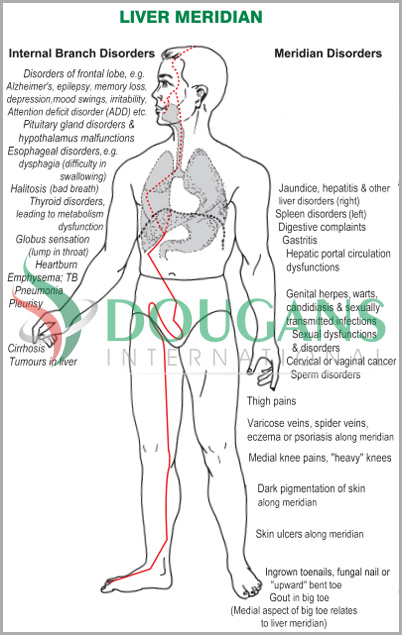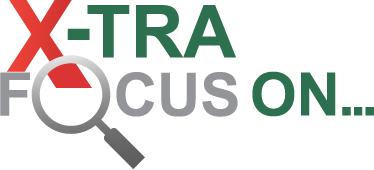X-Tra Focus on the Respiratory System
 Visual assessments of the feet, face, hands and body that can be associated with the Respiratory System are generic and can be used by all therapists and practitioners as part of a treatment protocol.
Visual assessments of the feet, face, hands and body that can be associated with the Respiratory System are generic and can be used by all therapists and practitioners as part of a treatment protocol.
The X-TRA focus on the Respiratory System CPD course will explore each respiratory medical condition and correlate these conditions to specific meridians and their corresponding organs. An understanding the philosophy of the Meridians and the Five Elements will ultimately assist the therapist or practitioner in identifying the underlying root cause of any respiratory condition, enabling a more precise treatment.
Discussing, for example, the Stomach Meridians, will involve an understanding of the acid/alkaline balance within the body and the influence this sensitive balance can have on microorganisms, oxygen, nitric oxide, viruses and germs in the respiratory system. The Stomach Meridians are furthermore related to the upper respiratory tract and associated conditions, as well as asthma, bronchitis and diaphragm conditions.
This course will further demonstrate how the Liver Meridians are associated with pneumonia, tuberculosis, chronic obstructive pulmonary disease (COPD) and cystic fibrosis, as well as how the Kidney Meridians are linked to chronic lung disease, pulmonary embolism and oedema. Respiratory conditions associated with the Lung and Colon Meridians will also be discussed, as well as those associated with the Bladder Meridians.
Incorporating the philosophies of the Five Elements, this course will concentrate on the Metal Element that relates to vitamins, minerals, amino acids and enzymes, and links the respiratory system to skin conditions. Muscles associated with the respiratory system will also be discussed as part of a treatment protocol.
How Does Food Relate to Breathing?
The process of changing food to fuel in the body is called metabolism. Oxygen and food are the raw materials of the process, and energy and carbon dioxide are the finished products. Carbon dioxide is a waste product that we exhale.
The right mix of nutrients in your diet can help you breathe easier.
Metabolism of carbohydrates produces the most carbon dioxide for the amount of oxygen used; metabolism of fat produces the least. For some people with COPD, eating a diet with fewer carbohydrates and more fat helps them breathe easier. Read more about nutritional plans from the nutrisystem programs.
Specific learning outcomes
On completion of this course, the participants will be able to relate to:
1. The upper respiratory tract: rhinitis, sinusitis, common cold and influenza, tonsillitis and laryngitis
- Body temperature and Five Elements (season)
2. Bronchitis
- Body temperature
3. Pneumonia
- The Liver Meridian (internal)
4. Pleurisy and other disorders of the pleura
- Viruses and germs (Stomach Meridian)
5. Tuberculosis
- The Liver Meridian (internal)
- Vitamin C
6. Chronic obstructive pulmonary disease (COPD)
- The Liver Meridian (internal)
7. Asthma
- Metal Element/time of peak
8. Cystic fibrosis
- The Liver Meridian (internal)
- The Metal Element
- Glutathione
- Clubbing of nails – Wood Element/the nails
9. Bronchopulmonary dysplasia – chronic lung disease
- The Kidney Meridian
- Body temperature
- The lung reflexes in the feet of a baby
10. Pulmonary embolism
- The Kidney Meridian
11. Pulmonary oedema
- The Kidney Meridian
12. Tumours
- Relate to the pathways of the Meridians
13. Diaphragm (muscle)
- The Stomach Meridian
- The Bladder Meridian
14. Shallow breathing
- Face/cheeks
- The Metal Element/emotion
15. How the modern world looks at the respiratory system
- Must have picked up a bug”
16. Acid/alkaline lifestyle
- Mouth breather vs. nose breather
- The confirmed functions of nitric oxide
- Microorganisms develop into harmful forms in acidic environments with little oxygen
- The importance of oxygen
- The Metal Element
17. A vaccine for every cold and flu
- Have you ever wondered what is really in vaccines?
18. Allergies and food intolerances
- Are we truly intolerant to natural wheat and dairy products or rather to what these products have become?
- Wheat and milk
19. Visual assessments of the feet
- Position of the lung reflexes in the feet
- New born babies – Note: Lung/bronchi and sternum reflexes
- Callous in lung reflexes of the feet
- Plantar warts in lung reflexes of the feet
- Diaphragm reflexes in the feet
- Sternum reflexes in the feet
- Pigeon chest/concaved chest
20. Meridians connected to the respiratory system
- Assessment of the Lung Meridian
- Assessment of the Colon Meridian
- Assessment of the Stomach Meridian
- Assessment of the Kidney Meridian
- Assessment of the Liver Meridian
- Assessment of the Bladder Meridian
21. Facial visual assessments connected to the respiratory system
- Assessment of the cheeks
22. The Metal Element related to the respiratory system
- Keywords and their relationship
- Skin problems connected to the respiratory system
- Alopecia (lack of body/facial hair or too much body hair)
23. Muscles connected to the respiratory system
24. Body temperature – why do we get more colds during seasonal changes?
- How to help a fever – stimulating the pituitary gland – Liver Meridian
25. A Meridian treatment
- Master the Meridian therapy of the toes








